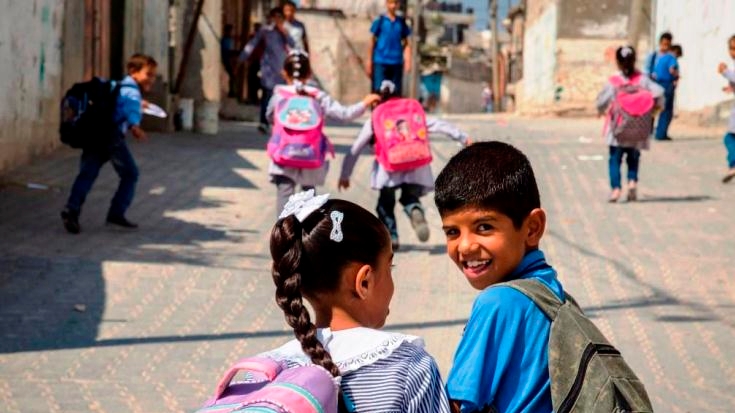About a quarter of the Palestinian labor force was out of work in 2006. Sixty-six percent of the population was below the poverty line by end-2006, while infant mortality had reached 25.3 deaths per thousand births. The decline in economic and social conditions caused by the crisis resulted in a deterioration of human development indicators. One person out of two was either vulnerable to becoming—or was already—food insecure (unable to access an essential food package, i.e. a daily ration that provides the required 2,100 kilocalories of energy). Although strong community and family ties preempted acute household hunger, chronic malnutrition was rising, and micronutrient deficiencies were an increasing concern.
Solution
The Third Emergency Services Support Project (ESSP III) was intended to benefit poorer segments of the population, particularly those who could not afford to seek private health care services or send their children to private schools, when many public schools for example are not operational because of funding shortages. Although the program’s aim was to mitigate the deterioration in service delivery, the project also helped many of these services to operate at higher levels.
Results
The Third Emergency Services Support Project (ESSP III) has contributed to achieving the following notable results:
- The number of public primary schools operating in March 2012 (1,192) is 23 percent higher than the 2007 baseline (972) and the number of students in those schools in March 2012 (623,380) is 81 percent higher than the 2007 baseline (345,250).
- In nine universities supported by the Project, the number of students in March 2012 (136,070) is 10 percent higher than the 2010 baseline (123,429).
- Actual values for March 2012 for overall hospital occupancy nearly equal or exceed the 2007 baseline values: 75 percent compared to 76 percent for the Shefa hospital and 73 percent compared to 67 percent for the Rafedia hospital.
- The increases in gynecology occupancy rates (an increase of 28 percent for Shefa hospital and an increase of 3 percent for Rafedia hospital) indicate that the Project was important for women.
- The number of students in 13 training centers increased by 23 percent in March 2012 compared to September 2007 (from 1,300 to 1,600 students).
The success of the ESSP III is primarily due to the fact that it was aligned with the PA’s strategy to help prevent a collapse in social service delivery. The project demonstrated that the ESSP approach is a valid concept in a protracted crisis situation. The ESSP approach and implementation modalities are now considered a Palestinian-administered instrument that can be scaled up or down to fund non-salary recurrent expenditures for social sector ministries.
Bank Group Contribution
The Third Emergency Services Support Project (ESSP III)—financed through a total of US$18 million in grants from the TFGWB—was closely linked to the Bank-administered ESSP Multi-Donor Trust Fund (MDTF). These two operations were part of the PA’s emergency program for the social sectors, and they had the common objective of helping to mitigate the deterioration in the provision of essential public services in education, health, and social services. ESSP III was financed by the TFGWB, whereas the ESSP MDTF was a Bank administered trust fund (TF) financed entirely by donors.
Partners
As mentioned above, the ESSP MDTF which had the same objective as the ESSP III, was implemented in parallel with the ESSP III; eleven donors contributed about US$88 million to the ESSP MDTF.
Moving Forward
The Palestinian Authority (PA) commented that, despite continued closures and curfews imposed on many areas in Gaza and the West Bank, the functional capacity and structure of ESSP III has been positively established and developed vis-à-vis its outlined goals of mitigating the deterioration in the delivery of education, health, and social care services to the Palestinian population in the parts of the West Bank and Gaza under the jurisdiction of the Palestinian Authority. The PA also acknowledged that ESSP III has helped maintaining basic public services related to education, health, and social affairs. It is crucial for the PA to prioritize support to key social service delivery ministries by ensuring that budget resources are allocated to meet emergency needs, especially those expected to have a large impact on the general well-being of the population and on people’s human capital development for future growth.
Beneficiaries
By supporting the operation of public primary schools and health facilities, the project benefited, to a large extent, the poorer segments of the Palestinian population. Direct beneficiaries of the ESSP III also included: the Ministry of Education and Higher Education (MOEHE), the Ministry of Health (MOH), and the Ministry of Social Affairs (MOSA). The entire Palestinian population in both the West Bank and Gaza benefited from the Project.
